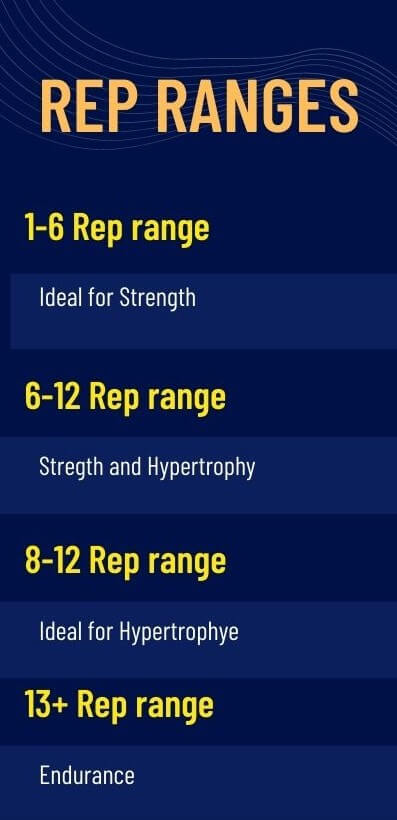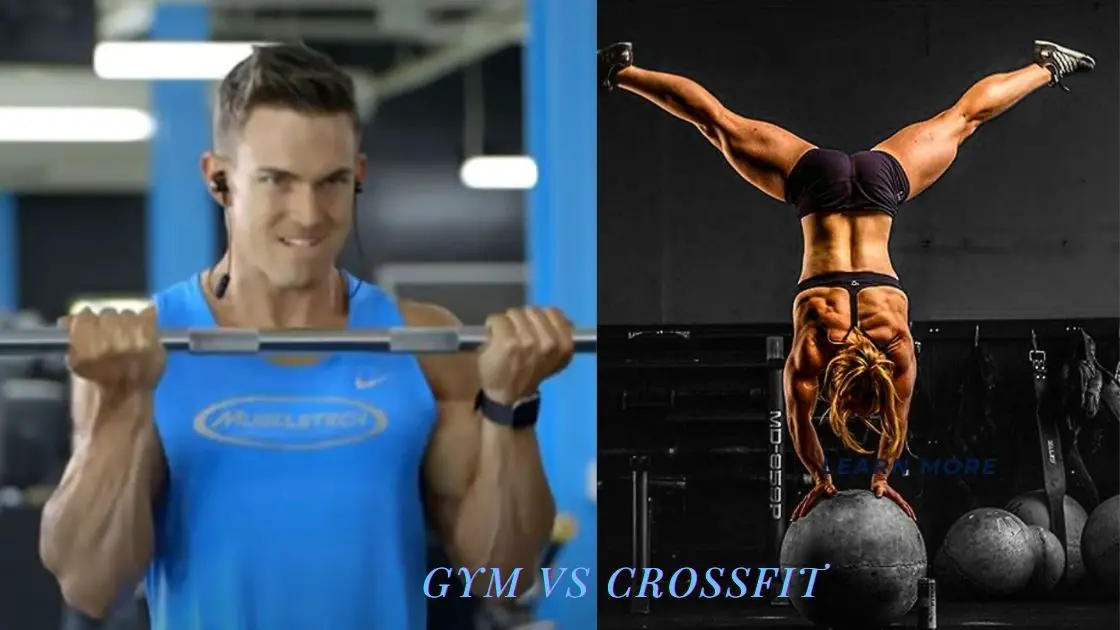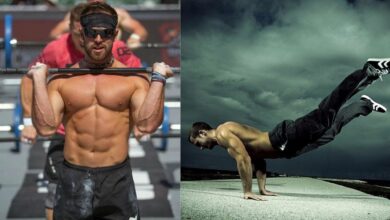Both Crossfit and traditional gym involve resistance training using weights. Crossfit is a younger method compared to bodybuilding. Interest, morphological structure, and talent are amongst the prominent determinants to consider in choosing Crossfit vs. gym.
Is Crossfit more effective than bodybuilding? To answer that question we should bring another question on the table, “for what purpose?”. Is your purpose to gain some mass and look fit? Are you looking for better functionality in day-to-day life? Besides, physical features such as height, morphological structure, genetic factors, and so forth play their role in it.
Many fitness enthusiasts regard weight loss as a side effect of an efficient training regimen, if not its primary objective. In addition, age limit, accessibility, and functionality aspect of the training regimen are other elements in the equation. An in-depth overview of Crossfit vs. gym can help make the best decision.
Table of Contents
Crossfit vs. Gym to Gain Muscle
There are differences between Crossfit and gym with regard to hypertrophy, but they both build muscle mass. Bodybuilding is the most efficient mass-gaining protocol. In bodybuilding, sets, reps, and rest periods are all designed to optimize hypertrophy. Cardiovascular efficiency and athletic performance are second to mass building. Strength is an inevitable byproduct of traditional gym workout, even though that is not the end goal unless the training program is for strength-specific athletes, such as powerlifters.
Building muscle mass is not the primary goal of Crossfit. Considering the viewpoint of functional fitness, excessive muscle mass hinders functionality and ease of movement. Nonetheless, the type of exercise and diet in Crossfit builds muscle as a byproduct.
Does CrossFit Build Muscle Mass?
Hypertrophy training is an intrinsic part of Crossfit. So, it definitely builds some muscle mass. However, Crossfit, to a large extent, is about functional fitness. Jumping, climbing, and explosive movements are also part of it. As a result, it is not optimal for building bulk or forming an overly shredded body. If you are thin or your main purpose is building muscle mass, a straight hypertrophy program is a more efficient choice than Crossfit.
After all, nutrition is the most crucial element for building muscle in any training protocol. Regardless of your chosen discipline, a combination of diet, rest, and hypertrophy exercise result in muscle-building. Especially for the first two years, the result is noticeable.
Weight Lifting Strategy in Crossfit vs. Gym
Apart from the variety of fitness domains in Crossfit as opposed to one-dimensional gym protocols, there are strategic differences between the two disciplines.
Olympic weight lifting or deadlift in Crossfit can accompany some swing motions. Doing pull-up can go along with kick-ups; the purpose is to get the job done, as fast as possible, as heavy as possible. When the aim is to go from A to B and hit the mark, proper form is not so important.
Bodybuilding, on the other hand, requires perfect control over the movement. You should feel every inch of the motion while maintaining the proper form throughout. It comes down to the fact that you have to make microscopic tears in the target muscle; that’s how muscle grows bigger.
This is not the strategy in Crossfit. The idea behind performance fitness is to handle real-life situations. When you want to move a heavy object in your home, it doesn’t matter what technique you use. In the traditional weight lifting mindset, this can be cheating. So, form and technique in Crossfit are not as essential as they are in straight gym exercise.
CrossFit vs. Bodybuilding for Fat Loss
A comparison between the cardio effect of Crossfit vs calisthenics has shown that Crossfit provided better cardiorespiratory stimulus compared to simple cardiovascular exercises. This means that Crossfit provides a higher rate of calorie expenditure than simple cardiovascular activities. We know that cardio is superior to hypertrophy when it comes to burning fat. In conclusion, the winner of Crossfit vs. gym for fat loss would be Crossfit.
Take it with a grain of salt: fat loss is 70 percent about diet and 30 percent exercise and other internal factors. In order to lose weight, you have to accompany proper diet with cardio. Losing fat requires the body to be in a calorie deficit mode, meaning we have to burn more calories than we take in. Cardiovascular activities have a higher repetition range than hypertrophy training, and they utilize the aerobic energy system, which means they consume fat as a source of energy.

Take note that it is not the number of repetitions that correlates with fat loss, but a shift to the aerobic energy system that increases the fat burning rate.
Many exercises in Crossfit are in HIIT format. Considering that Crossfit has a dedicated cardio section known as METCON, it is a better option for weight loss than bodybuilding. Generally speaking, body composition changes and weight loss take time.
There is no quick fix, and sticking to the program for a few months is essential to notice some results.
Crossfit Fat Loss Diet
In 2016 a thesis was submitted to JAMES MADISON UNIVERSITY about the effect of low carbohydrate ketogenic diet along with Crossfit on weight loss and performance. During the 6 weeks of study, 27 beginner Crossfiters were assigned to two groups. A low-carb ketogenic group with restricted carbohydrate intake and a controlled group with natural dietary intake. Results show significant fat mass and weight reduction while maintaining BMI and lean body mass (LBM).
This study shows that a combination of Crossfit and low-carb ketogenic diet can improve body composition and performance. However, this study was for a 6-week period. Crossfit is a demanding exercise that requires a high calorie intake. Hence, it does not certify it as a long-term dietary approach.
Benefits of CrossFit vs. Gym
Each training method has its unique characteristic but here we would like to pinpoint a few advantages of CrossFit vs. gym.
- Running is a simple and free aerobic activity. It’s also the most common way to lose fat. With Crossfit you can improve your running without even specifically training for running.
- Crossfit involves a lot of HIIT activities that result in burning calories and weight loss. So, you do not need a specific weight loss program.
- Walking uphill is both an exercise and a leisure time activity that challenges stamina. Crossfit improves your stamina for mountain hiking too.
- In Crossfit you train for Olympic weight lifting, deadlift, and other weight training exercises which are typical of the old school gym. You gain the best of both worlds.
- If you like riding a bike, Crossfit improves your performance.
- CF improves performance in combating and wrestling activities.
- Crossfit is a time efficient way to have a well-rounded workout in 1 hour.
- Flexibility and gymnastics are not part of the gym protcols, but crossfit specifically works on flexibility.
We can do many separate activities or cross-train to achieve these different benefits, but Crossfit provides a time-efficient way for those who don’t want to spend all their time on different sports.
CrossFit Body vs. Gym Body in Male and Female
There are significant differences between body composition of athletes in Crossfit vs. gym. To put the comparison into perspective, let’s consider two non-elites with the same conditions (i.e., same age, gender, genetics, diet, etc.). After a period of time, the one who has gone to the gym will be stronger and gain more muscle mass. The one who went to the box (Crossfit gym) will be in better cardiovascular condition. Most Crossfit workouts, like WODs, are high-intensity. So, the expected outcome is that a Crossfitter should become leaner than a non-pro bodybuilder, at least in the beginning.
What Happens to Your Body When You Do CrossFit?
Crossfit body transformation would be as the following. During the first 4-6 weeks after the initial pains and muscle soreness die down, you will start to notice improvements in functional metrics such as running, box jumps, etc. but not much of body shape transformation. Structural changes and hypertrophy will take months to produce noticeable results in both the Crossfit box and the gym.
Crossfit Bodybuilding Hybrid Workout
There are lots of different opinions about the benefits of including both Crossfit and bodybuilding in a single program. Both of these fitness modalities are demanding, and a combination of both will be too much! It increases the possibility of either injury or overtraining.
The two take separate paths. Bodybuilding requires maximum muscle breakdown followed by rest days, whereas Crossfit works at high intensity across broad domains and times. The path of bodybuilding is, to some extent, in conflict with a WOD or METCON. The traditional gym is more about aesthetics than functionality.
Can you combine Crossfit and bodybuilding? By tweaking both bodybuilding and Crossfit and combining them, it is possible to form a Crossfit bodybuilding hybrid program that increases hypertrophy while maintaining the conditioning of Crossfit.
Functional Bodybuilding vs. CrossFit
Taking the functionality aspect of Crossfit vs. gym, traditional gym is not known for functional fitness protocol but Crossfit is functional training. However, there is another variation of gym protocol that improves functionality. Functional bodybuilding, which Marcus Filly founded, is a Crossfit-bodybuilding hybrid training program. It’s a fitness program that combines bodybuilding principles such as tempo, sets, and reps with functional training. It is a more holistic approach to fitness by targeting the entire body and not just muscle groups. Functional bodybuilding gives special importance to the quality of movement over intensity.
Functional bodybuilding is a step away from the competitive nature of Crossfit and advocates “look good and move well” mindset.
A large portion of people who apply for Crossfit membership has the intention of feeling good and looking good, rather than competing. The shift from Crossfit to functional bodybuilding arises from there.
Crossfit vs. Gym Membership Cost
Crossfit is not a cheap sport when it comes to Crossfit vs. gym membership cost. the Crossfit box membership is normally higher than gym membership fee. After all, some people look for more cost-efficient options to stay fit such as Crossfit workout with bodyweight, whereas there are those who do not consider health and wellness as extra expenses.
To Put CrossFit vs. Gym in a Nutshell
- Bodybuilding is about aesthetics and muscle definition, whereas Crossfit values performance over aesthetics. However, there is a difference between the definition of aesthetics in bodybuilding and the typical beach body notion.
- Bodybuilding maximizes stress in the muscle by shortening the range of motion in basic movements. Crossfit tries to increase work capacity. So it uses muscles in their full range of motion.
- Traditional bodybuilding works on one or two muscle groups per session. This way, it maximizes muscle breakdown and hypertrophy thereafter. Crossfit is more of a full-body exercise. This way, it maximizes work output in a given period.
- Bodybuilders use weight machines to train muscles in isolation. In nature though, muscles don’t work in isolation. For this reason, Crossfit considers the body as a whole unit. It doesn’t use machines, since they don’t enhance the integration and coordination of body parts.
- Excessive cardio degrades hypertrophy. Bodybuilding does not promote cardiovascular training as its primary training strategy. On the other hand, Crossfit regards cardio as an essential aspect of fitness and highlights it in METCON.
- A Crossfitter has better muscle endurance and stamina compared to a bodybuilder.
Spatial awareness, as in gymnastics, is not a part of bodybuilding protocol. Hence, it doesn’t advocate handstands, jumps, etc. Crossfit pays attention to gymnastics capabilities as well, because these skills increase functionality in the natural world.





